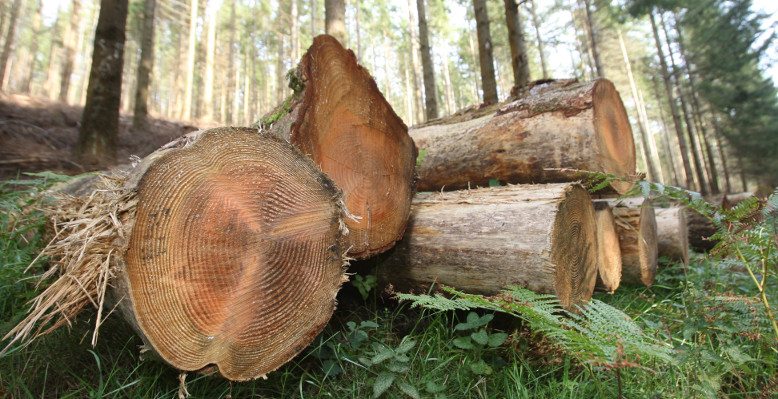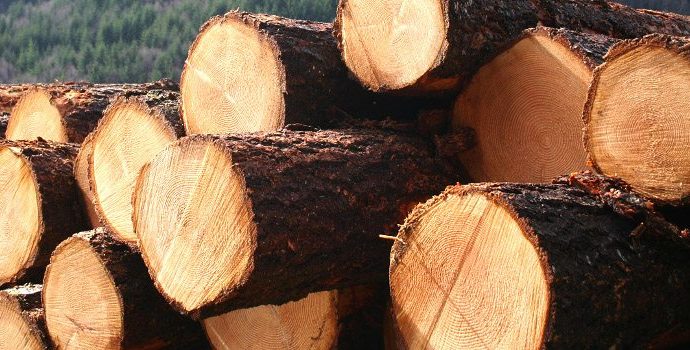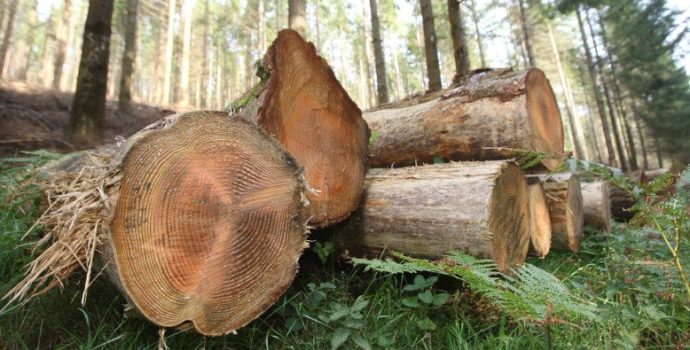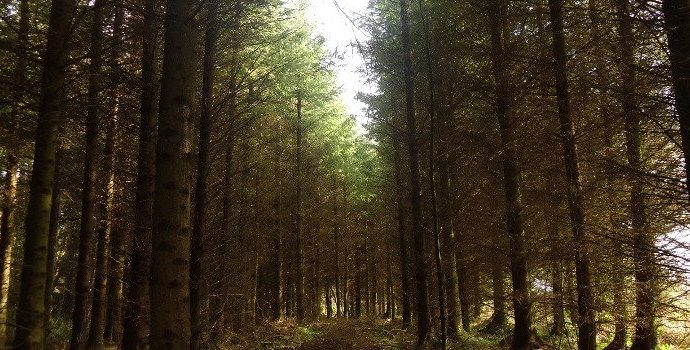Forestry Reports
Forestry Council Report November 2023

- Market Review
- Under the both previous and new Forestry Programme 1,552 hectares of new forests have been established to date in 2023, while 61km of new forest roads constructed. IFA have requested that a breakdown of farmer planting be included in the dashboard.
- The monthly target for private licences with ecology input (excluding Coillte felling licences) has failed to be met in 2023, with licences issuing to the private sector significantly lower than those received by Coillte.
Figure 2. Forest Licence Dashboard (Week 4 October 2023)
Figure 3. Review of licences issued versus planted/constructed (Week 4 October 2023).
- Activity since last National Council
- In June, IFA organised the IFA Farm Forestry National Conference 2023 – A Path Forward for Farm Forestry in Tullamore Court Hotel. Minister Hackett gave the closing address at the conference as well as participating in a Q&A with IFA President, Tim Cullinan. The topics discussed at the conference ranged for concerns in relation to the proposed draft forestry programme, ash dieback, agro-forestry and forest carbon.
- In advance of attending the IFA Farm Forestry conference, Minister Hackett announced an Independent Review of Ash Dieback supports for landowners and the approach taken by the Department since 2013 to provide the Minister with advice on a way forward in line with the draft Forest Strategy.
- In August IFA published a lobbying document outlining the type of compensation required that must include compensation for loss of earnings (see enclosed).
- IFA made a formal submission to the independent review group (see enclosed)
- In August an IFA delegation met with the independent review group to outline in person the requirements of farmers that had been impacted by the disease.
- In October the independent review group published its report which stated that urgent action was required and that the States response during the period 2018 to 2023 to disease was ineffective. It proposed the following recommendations:
- a simplified approval process for site clearance.
- the full cost of site clearance and regeneration should be covered by grant aid, with additional support available for clearance of challenging sites.
- a review of re-establishment and maintenance costs, taking account of need for more intensive and regular maintenance associated with re-establishment forests.
- the introduction of a be-spoke re-establishment annual payment consistent with the general rates available under the new Forestry Programme.
- explore the potential for a one-off ex gratia payment in recognition of the absence of an effective scheme between 2018 and 2023.
- In response to the publication of the report, IFA issued two press release and has maintained contact with DAFM to try to ensure a speedy response to the findings of the report, which is still pending.
- Ireland’s Forestry Programme 2023 to 2027 was approved by the European Commission on the 2nd September and was approved by Cabinet on 2nd September.
- The Afforestation Scheme has an annual target to establish 8,000ha, of which 50% is to be broadleaf. The new scheme is broken down into different 12 forest types, with increased premiums to 20 years for farmers. Premiums range from €746/ha to €1,142/had depending on forest type established There is a 20% broadleaf now mandatory for all conifer forest types, in addition to the up 15% requirement for areas of biodiversity enhancement (ABEs).
- The eligible area under the programme has been significantly reduced due to new environmental requirements relating to breeding waders, High Nature Value Farmland and peat soils (soils with a peat depth of 30cm or less will be eligible).
- A new Native Tree Area Scheme was launched that allows a farmer to plant small areas of native trees on farms without a licence. The scheme allows a farmer to establish a maximum of 2 hectares per holding under two interventions; NTA 1 creatin of small native forest and NTA 2 creation of native forests for water protection.
- The tree planting area must be between 0.1 and 1.0 hectare and can be planted in multiple smaller blocks (such as the corners of fields). All parcels must be 20 metres or greater in width, measured tree-to-tree. In certain situations, 10% of a proposed area can be less than 20 metres in width to a minimum of 10m in width.
- Areas of Biodiversity Enhancement (ABEs) such as aquatic buffer zones are also eligible for inclusion up to a maximum allowable ABE area is 15%. Therefore, the maximum payment area is set at 1.15 ha.
- The Forest Road Scheme has launched and provides funding for the construction of forest roads and associated infrastructure such as bellmouths, turntables, drains, culverts and bridges. The maximum grant aid for a harvesting road is €55/ha up to a maximum density of 25m/ha. There is also a special construction works grant of up to €10,000 per application.
- In August, in advance of the new Forestry Programme being approved IFA published a document highlighting 5 key reasons why the new programme was a lost opportunity that would not see farmers plant at the scale required to meet the targets, these included payment for ecosystem services, farmer premium rate, forestry licencing, ash dieback and the replanting obligation (see enclosed).
- IFA has written to the Minister Darragh O’Brien and officials in the Department of Housing, Local Government and Heritage to seek a meeting to discuss the need for grant aid to support and coordinate the safe removal diseased ash dieback along the public road network.
- The IFA Farm Forestry committee are to coordinate meetings at county level via IFA County Executives with respective Local Authorities to seek support for the IFA’s proposal for grant aid, similar to supports offered in the UK, to support the Local Authorities and Landowners to safely removed diseased trees.
- IFA have written to Minister Hackett to seek the immediate establishment of a Spruce Bark Beetles Taskforce in response to the threat posed by the importation of timber from Pest Free Areas in Scotland. A response to the letter is still pending from the Minister.
- IFA also issued a press release to raise awareness of the risk posed and the need for an immediate establishment of a taskforce to protect farmers spruce forests.
- IFA attended the Forest Industry Transport Group study tour to Scotland. As part of the visit the group met with representatives from the Forest Industry Safety Accord (FISA) Forest Haulage Working Group and Forestry Transport and Innovation Advisor from Scottish Forestry.
- The IFA Farm Forestry committee met on Tuesday the 21st March in the Farm Centre and had online meeting on Monday 8th May.
- Any EU/COPA developments
- Ireland’s Forestry Programme 2023 to 2027 was formally approved by the European Commission for State Aid approval in August 2023.
- IFA attended the Working Party on Forestry and the Joint preparatory meeting for the EU Stakeholders Platform on Forest and Forestry on 6th September
- Upcoming issues
- The publication of the implementation plan and new scheme to support farmers with ash dieback.
- The establishment of a Spruce Bark Beetle Taskforce
- The introduction of supports to safely remove diseased trees from the public road network.







